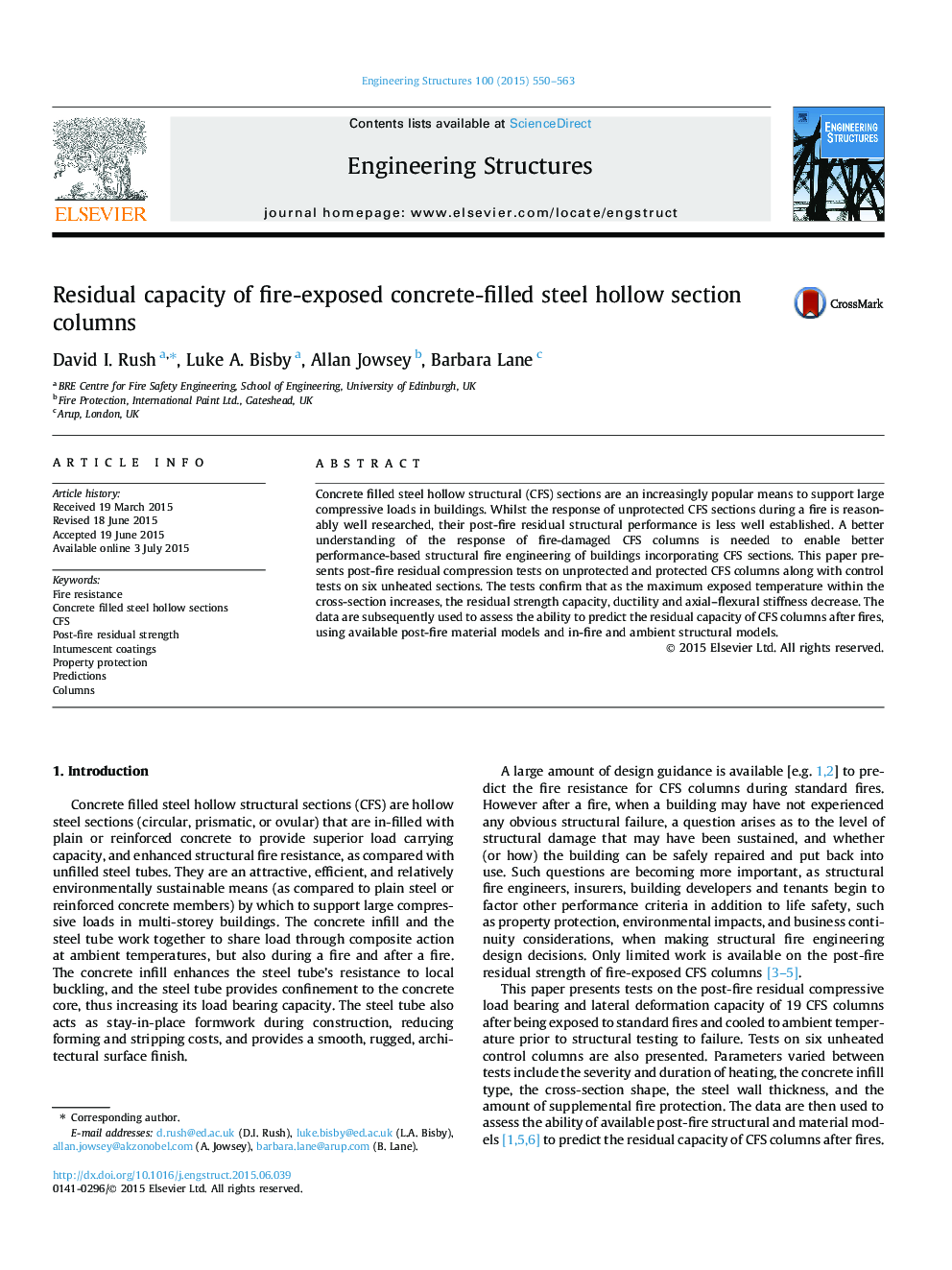| کد مقاله | کد نشریه | سال انتشار | مقاله انگلیسی | نسخه تمام متن |
|---|---|---|---|---|
| 266138 | 504344 | 2015 | 14 صفحه PDF | دانلود رایگان |
• Post-fire residual compression tests on unprotected and protected CFS columns.
• Axial failure load and stiffness decreased as cross-section temperatures increased.
• Neither pre-fire concrete age or concrete infill type influenced post-fire response.
• Fire protection increases retention of axial capacity and rigidity after fire.
• Ability to predict failure load for fire damaged CFS columns confirmed.
Concrete filled steel hollow structural (CFS) sections are an increasingly popular means to support large compressive loads in buildings. Whilst the response of unprotected CFS sections during a fire is reasonably well researched, their post-fire residual structural performance is less well established. A better understanding of the response of fire-damaged CFS columns is needed to enable better performance-based structural fire engineering of buildings incorporating CFS sections. This paper presents post-fire residual compression tests on unprotected and protected CFS columns along with control tests on six unheated sections. The tests confirm that as the maximum exposed temperature within the cross-section increases, the residual strength capacity, ductility and axial–flexural stiffness decrease. The data are subsequently used to assess the ability to predict the residual capacity of CFS columns after fires, using available post-fire material models and in-fire and ambient structural models.
Journal: Engineering Structures - Volume 100, 1 October 2015, Pages 550–563
